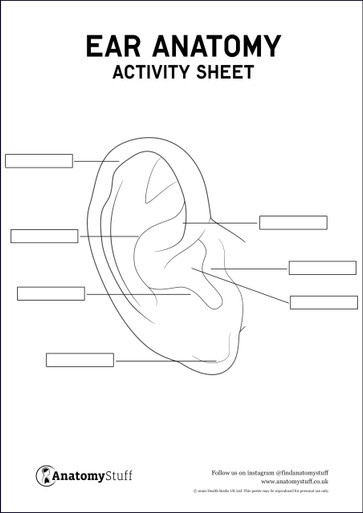Written by: Liz Paton, MSc
Ear Anatomy Overview
Our ears allow us to hear sounds and also help us to maintain balance. The ear transmits sound waves to our brain which enables us to hear sound.
Ear Anatomy
The outer ear is the visible part of the ear and consists of the pinna and the ear canal. This part of the ear is made from cartilage, a smooth and firm tissue which helps the ear maintain its shape and provide flexibility. The outer ear acts as a funnel to transfer soundwaves to the next part of the ear. Earwax is produced in the outer ear and acts to clean and protect the rest of the ear.
The middle ear is filled with air and this is where sound waves are turned into sound vibrations which are transferred into the inner ear. The tympanic membrane (eardrum) is a small piece of tissue that separates the outer ear and middle ear.
When sound hits the tympanic membrane, this causes vibrations to be passed on to the ossicles, which are three small bones located in the middle ear. These small bones are individually called malleus, incus and stapes.
The inner ear is where sound vibrations are converted into nerve signals via the cochlear which are very small canals. The nerve signals travel to the brain through the auditory nerve.
Balance
The way we maintain balance is through the cochlear located in the inner ear. The canals are filled with fluid and lined with very small hairs called cilia. The vestibular nerve transmits nerve signals to the brain which allows our muscles to keep us balanced.
Sometimes we feel dizzy when we spin around because the fluid in the cochlear is moving. Once the fluid becomes still when we stop spinning, we start to feel less dizzy.















